In a place like New York City, it can be hard to see the stars in the sky at night. But would you believe it if we told you that Gaynor students can now see them at any time, from inside their very own school? Introducing: the StarLab! Donated to us from the Liberty Science Center thanks to the efforts of Science Chair Cristina Fabricant and Science Specialist Andrew Prasarn, the StarLab is an exciting new tool in the Gaynor science department’s collection.
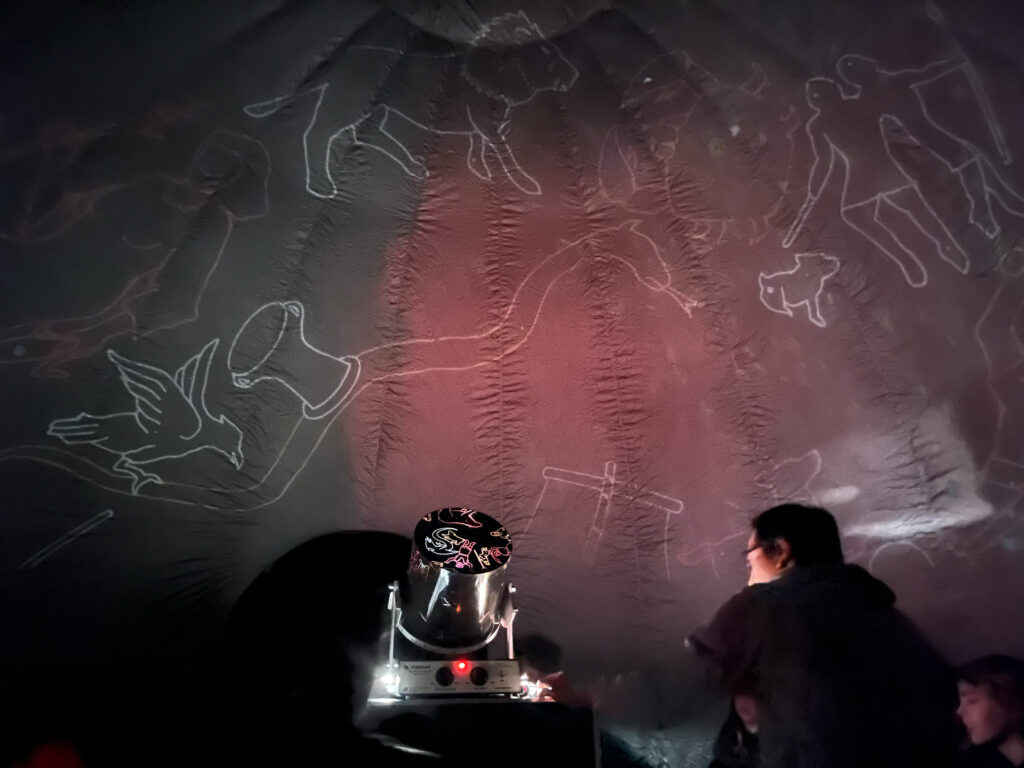
Housed in the Yvette Siegel-Herzog Performing Arts Center, the StarLab is a portable planetarium, made up of an inflatable dome and a projector. Once it’s been inflated, students can enter the StarLab via a tunnel attached to the dome. The tunnel helps keep the air inside of the dome so that students can enter or exit without the StarLab deflating. On the inside, the StarLab is pitch-black, so when a teacher places a cylinder onto the projector it will clearly project whatever is on the cylinder onto the ceiling of the dome. Some of the cylinders owned by Gaynor’s science department include various constellations: constellations according to Ancient Greek culture, according to Native American culture, and according to African culture. There is also a star field cylinder, which shows the scientifically accurate colors, sizes, and locations of the stars. A teacher can even adjust the angle of the projector so that the tilt is the same tilt as we would see in the night sky depending on our placement on Earth. There are also cylinders that show the phases of the moon, or the position of the planets.
We stopped by the PAC when a Green Cluster class was identifying constellations according to Ancient Greek culture, as part of their history unit on Ancient Greece. STEM Specialist Molli Grady was explaining to the students the different stories behind the constellations. “I explained to the students that this was my first time teaching with the StarLab and showed them that I was still learning too. This was helpful for them to see that teachers, too, are always learning. Once I got into the swing of it, it was easy to see how incredibly worthwhile having this dome is. The students were captivated by the night sky and the different constellations. Seeing their reactions definitely made it worthwhile,” said Ms. Grady.
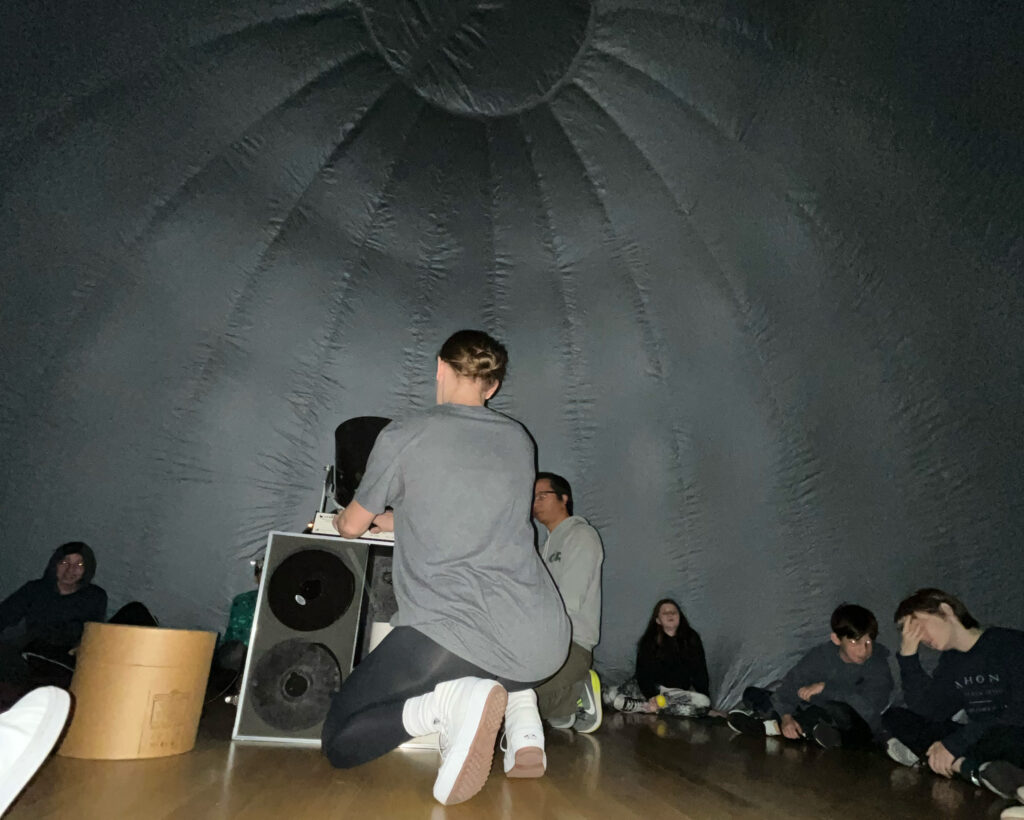
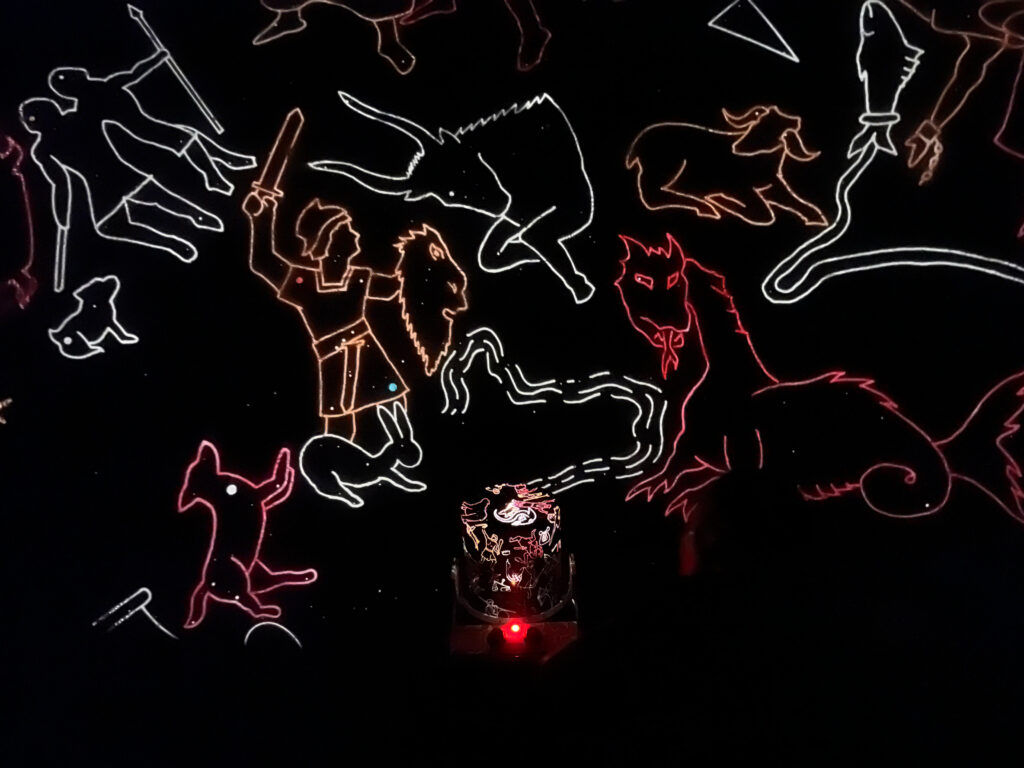
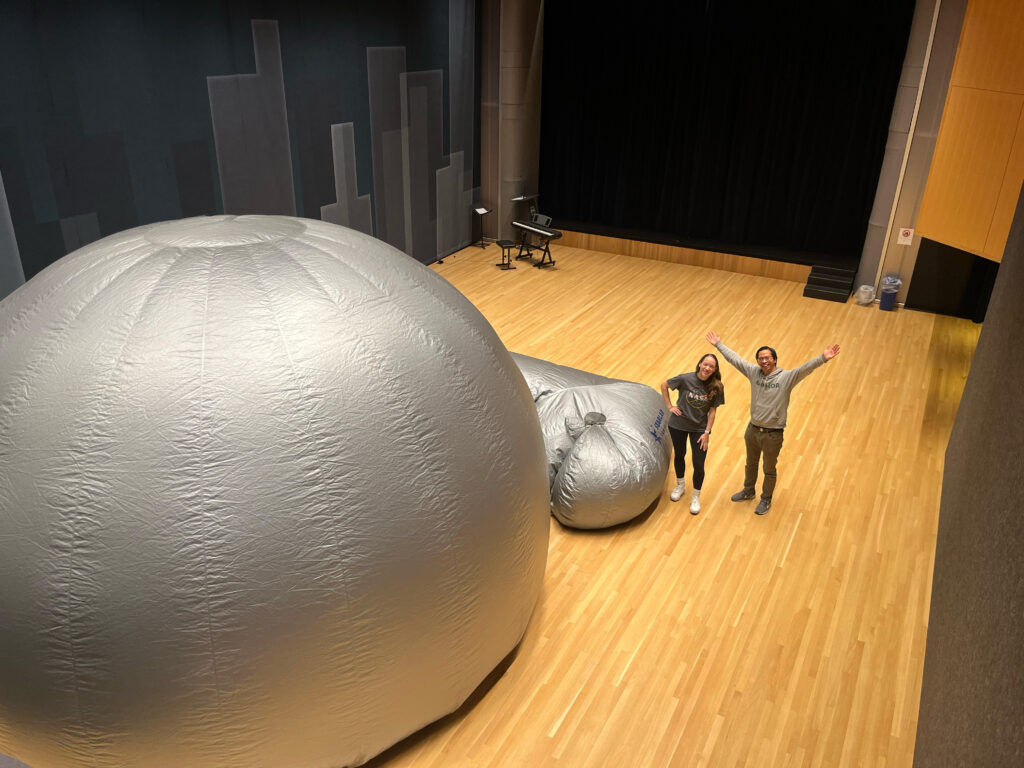
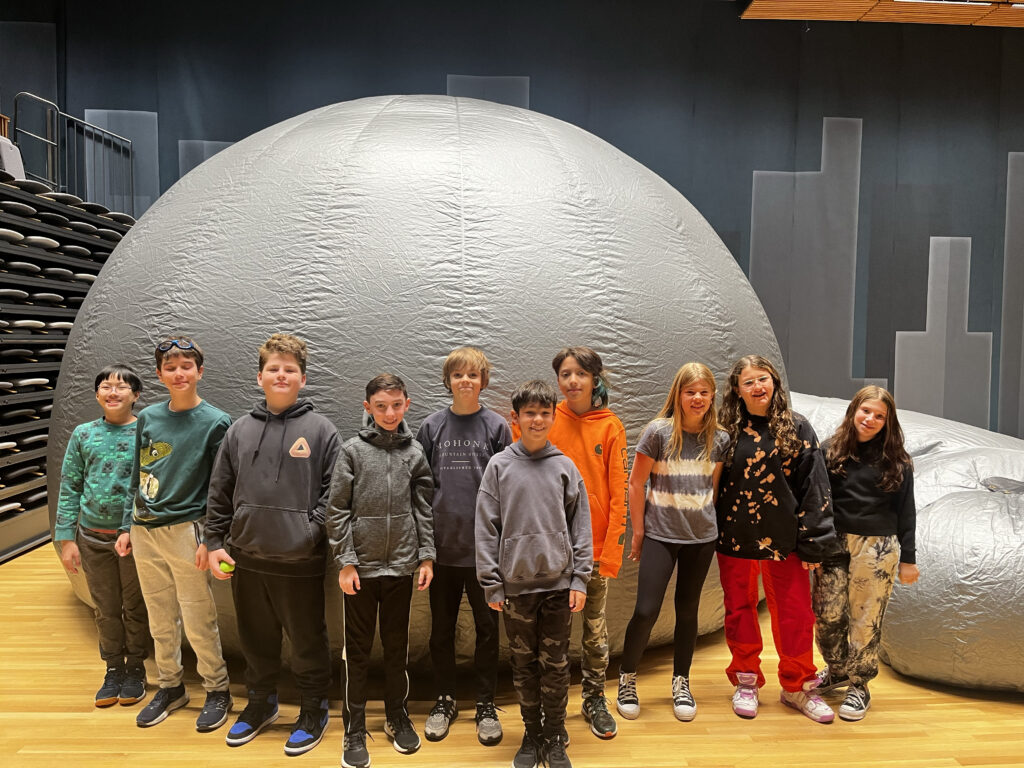
“I tell my students that the StarLab is how I learned to find constellations and I can apply that information when I go outside and see the constellations,” Mr. Prasarn said. But the StarLab can be used for more than just identifying constellations and planets. There are cylinders that show the difference between an urban night sky and a rural night sky to demonstrate the effect of light pollution; there are even cylinders that show the inside of cells, or plate tectonics and the layers of the Earth. The StarLab has an incredible amount of potential to work with various curricula, not just astronomy-related subjects. In speaking with the members of the science team, there is palpable excitement about the future of the StarLab. “I think it’s one of those things that you can’t replicate in any manner, not in a textbook or on a website; not much else can really simulate the night sky like it can,” said Mr. Prasarn.
An unexpected benefit of the StarLab is its calming effect on students due to the darkness inside the dome. Mr. Prasarn noted that, “I asked my [Blue Cluster] students what they liked about it, and one of the biggest things they liked is the dark. It’s almost like sensory deprivation, they just liked being in a dark, quiet area. A lot of our students [can have] sensory overload. But being in there kind of toned down some senses and heightened some others, they felt very relaxed and some of them literally laid down. They could just lie down and look up at the stars. So I was surprised by how many people appreciated just being in the dark.”
This is the StarLab’s first year at Gaynor, and we are very excited to see what the future holds inside the dome!
